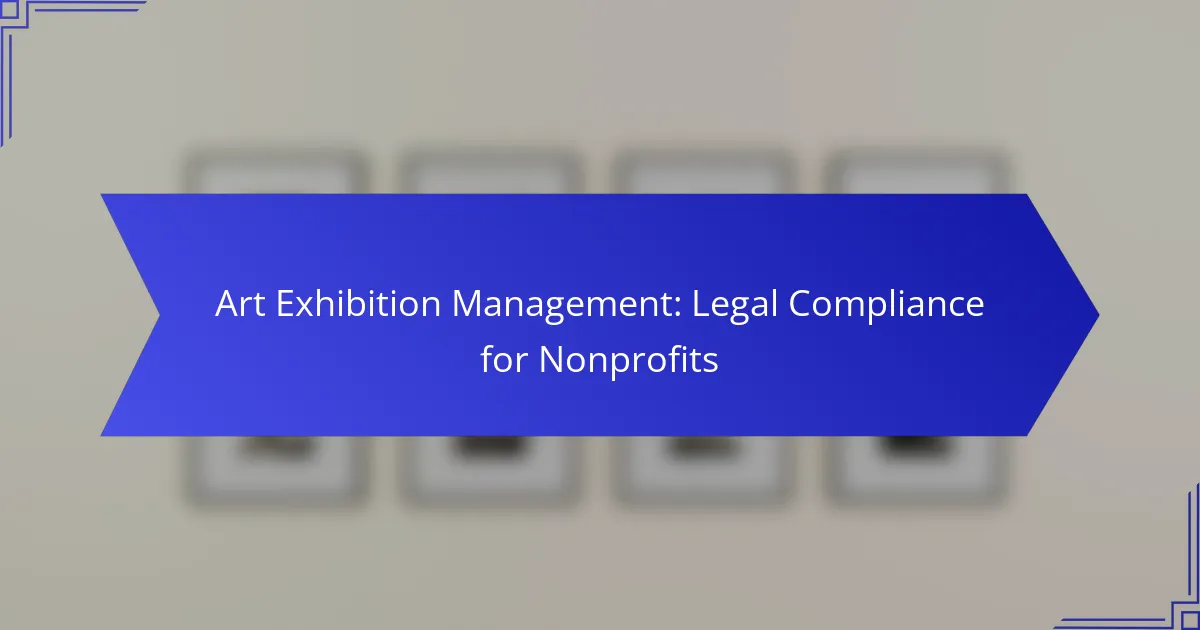Managing an art exhibition as a nonprofit involves navigating a complex landscape of legal compliance, including obtaining permits, securing insurance, and adhering to health and safety regulations. Understanding copyright laws and best practices for contracts is essential to protect the organization and foster respect for artists’ rights. By prioritizing these legal obligations, nonprofits can ensure a successful and legally sound event.

What are the legal requirements for art exhibitions in the US?
Art exhibitions in the US must comply with various legal requirements, including obtaining necessary permits, securing insurance, and adhering to health and safety regulations. Nonprofits should be aware of these obligations to avoid legal issues and ensure a successful event.
Permits and licenses
Depending on the location and nature of the exhibition, specific permits and licenses may be required. Common permits include those for public assembly, temporary structures, and alcohol sales if applicable. It’s crucial to check local regulations, as requirements can vary significantly between states and municipalities.
Nonprofits should start by consulting their local government or a legal expert to determine what permits are necessary. Failing to secure the appropriate permits can result in fines or the cancellation of the event.
Insurance coverage
Insurance is essential for protecting the nonprofit and its assets during an art exhibition. General liability insurance is typically required to cover potential injuries or damages that may occur at the event. Additionally, consider obtaining coverage for artworks on display, which may involve specialized policies.
Nonprofits should evaluate their insurance needs based on the scale of the exhibition and the value of the artworks. Consulting with an insurance broker experienced in art-related events can help ensure adequate coverage is in place.
Health and safety regulations
Health and safety regulations are critical to ensuring the well-being of attendees and staff during an art exhibition. This includes compliance with fire codes, accessibility standards, and crowd control measures. Nonprofits must assess the venue to identify potential hazards and implement necessary safety protocols.
It’s advisable to conduct a risk assessment prior to the event and develop an emergency plan. Regularly reviewing local health guidelines, especially in light of public health concerns, will help maintain a safe environment for all participants.

How can nonprofits ensure compliance with copyright laws?
Nonprofits can ensure compliance with copyright laws by understanding fair use, obtaining necessary permissions, and adhering to proper attribution practices. These steps help protect the organization from legal issues while promoting respect for artists’ rights.
Understanding fair use
Fair use allows limited use of copyrighted material without permission under certain conditions. Nonprofits should familiarize themselves with the four factors that determine fair use: the purpose of use, the nature of the copyrighted work, the amount used, and the effect on the market value of the original work.
For example, using a small excerpt of a painting in an educational context may qualify as fair use, while displaying an entire artwork in a promotional brochure likely would not. Nonprofits should assess each situation carefully to avoid potential infringement.
Obtaining permissions
Obtaining permissions involves reaching out to copyright holders to secure the right to use their works. This process can include negotiating licenses, which may involve fees or specific terms of use. Nonprofits should keep records of all permissions granted to ensure compliance.
When approaching artists or their representatives, be clear about how the work will be used, the duration of use, and any potential audience. This transparency can facilitate smoother negotiations and foster positive relationships with creators.
Attribution practices
Proper attribution is essential in respecting copyright and acknowledging the contributions of artists. Nonprofits should always credit the original creator when using their work, even if the use falls under fair use or permission has been granted.
Attribution should include the artist’s name, the title of the work, and any relevant copyright notices. This practice not only honors the creator but also enhances the nonprofit’s credibility and fosters goodwill within the artistic community.
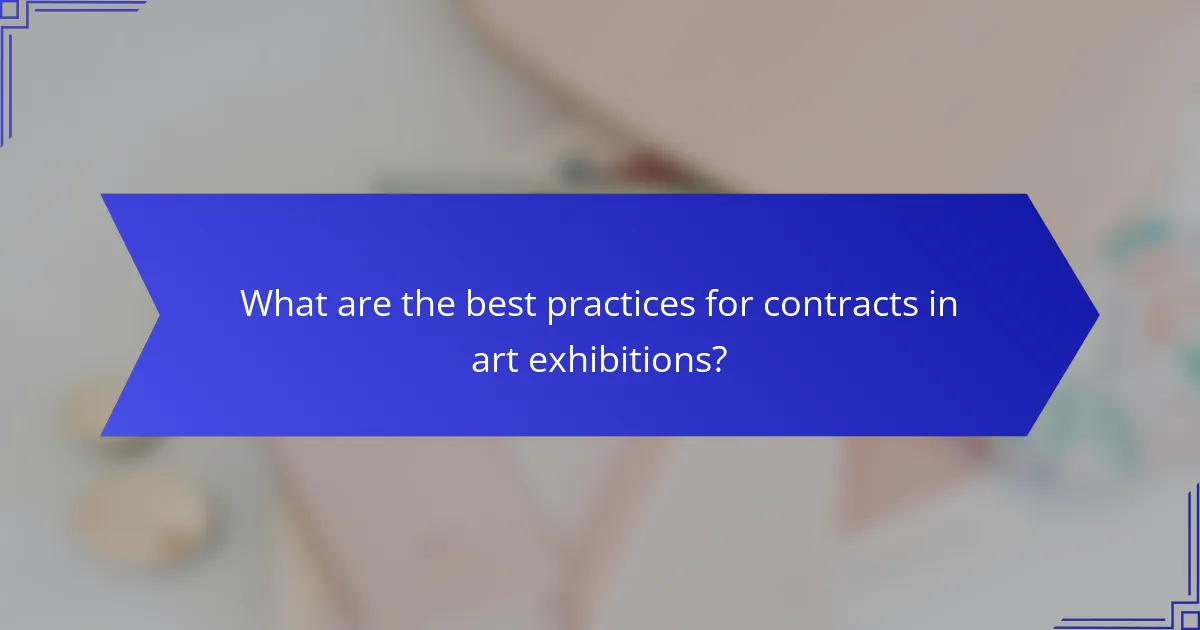
What are the best practices for contracts in art exhibitions?
Best practices for contracts in art exhibitions include clear terms, mutual understanding, and legal compliance. Ensuring that all parties are aware of their rights and responsibilities minimizes disputes and enhances the overall success of the exhibition.
Artist agreements
Artist agreements are essential for defining the relationship between the artist and the exhibition organizers. These contracts should specify the scope of work, payment terms, and rights to the artwork, including reproduction and display rights.
When drafting artist agreements, consider including clauses about deadlines, installation requirements, and insurance coverage. This helps protect both the artist’s interests and the exhibition’s integrity.
Vendor contracts
Vendor contracts outline the terms between the exhibition organizers and service providers, such as caterers, equipment rental companies, and marketing agencies. These agreements should detail services provided, payment schedules, and liability clauses.
To avoid misunderstandings, ensure that vendor contracts include performance standards and deadlines. It’s also wise to have a cancellation policy in place to manage unforeseen circumstances.
Venue agreements
Venue agreements are crucial for securing the location of the exhibition. These contracts should cover rental fees, duration of use, and any restrictions on the use of the space.
When negotiating venue agreements, pay attention to clauses regarding insurance, maintenance responsibilities, and access for installation and dismantling. Understanding local regulations and fire safety codes can also help in ensuring compliance and safety during the exhibition.
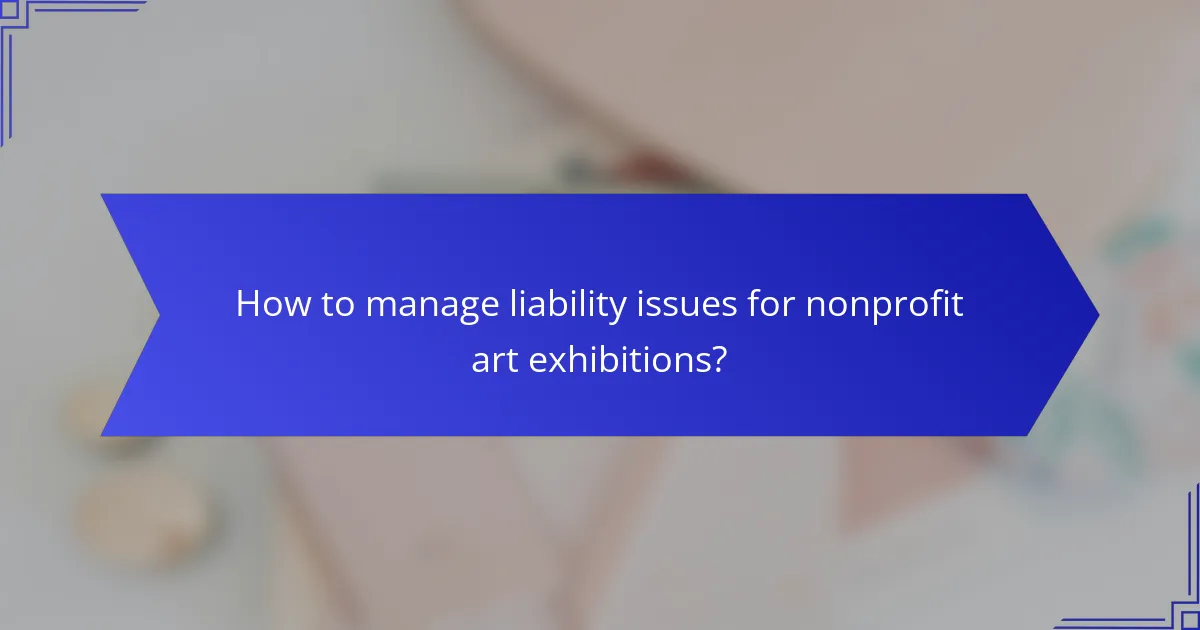
How to manage liability issues for nonprofit art exhibitions?
Managing liability issues for nonprofit art exhibitions involves understanding potential risks and implementing strategies to mitigate them. This includes using waivers, obtaining insurance, and ensuring compliance with local regulations.
Waivers and releases
Waivers and releases are legal documents that participants sign to acknowledge the risks associated with an art exhibition and agree not to hold the organization liable for injuries or damages. These documents can help protect the nonprofit from lawsuits but must be carefully drafted to be enforceable.
When creating waivers, ensure they are clear and specific about the risks involved. It’s advisable to consult with a legal professional to tailor the language to your specific event and jurisdiction. Common pitfalls include vague wording and failing to address all potential risks.
Liability insurance options
Liability insurance is crucial for nonprofit art exhibitions as it provides financial protection against claims of injury or property damage. Options include general liability insurance, which covers a wide range of incidents, and specific event insurance, which is tailored for individual exhibitions.
When selecting insurance, consider factors such as the size of the event, expected attendance, and the venue’s requirements. Premiums can vary widely, often ranging from a few hundred to several thousand dollars, depending on these factors. Always compare multiple providers to find the best coverage for your needs.
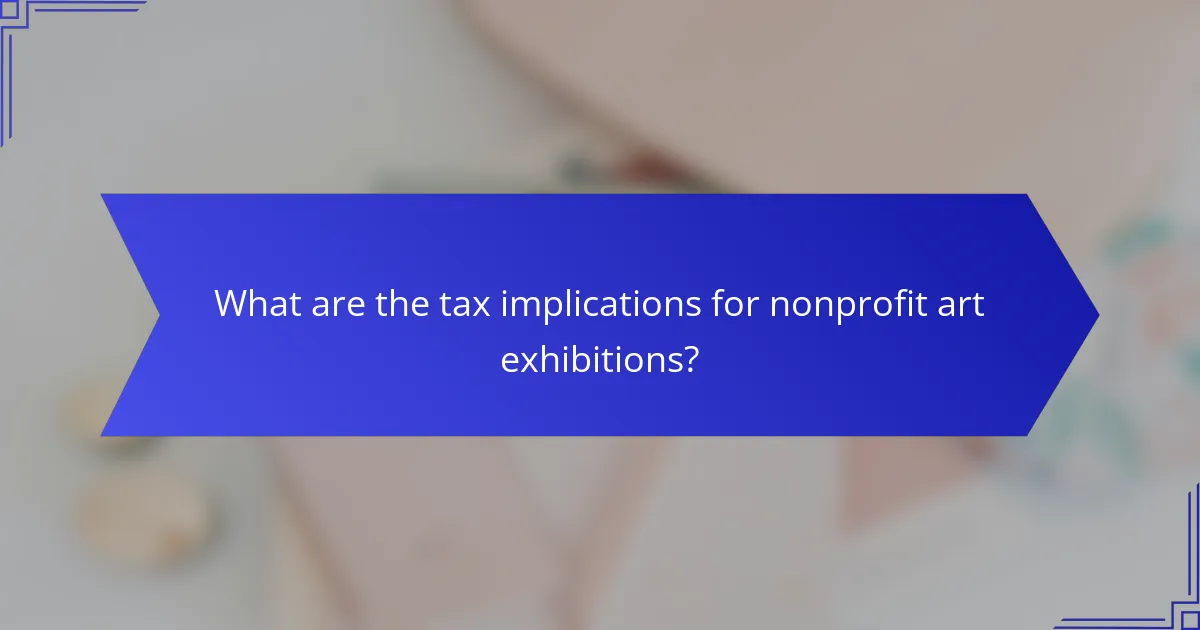
What are the tax implications for nonprofit art exhibitions?
Nonprofit art exhibitions can have various tax implications, primarily concerning sales tax and the organization’s tax-exempt status. Understanding these factors is crucial for compliance and financial planning.
Sales tax considerations
When selling artwork or merchandise during an art exhibition, nonprofits may be subject to sales tax depending on local regulations. Generally, if the organization sells items for fundraising purposes, it must collect and remit sales tax on those sales.
To navigate this, nonprofits should check their state’s sales tax laws, as some states offer exemptions for certain types of sales or for nonprofit organizations. Keeping accurate records of sales and tax collected is essential for compliance and reporting.
Tax-exempt status
Nonprofits typically operate under a tax-exempt status, such as 501(c)(3) in the United States, which allows them to avoid federal income tax on donations and certain income. However, this status can be jeopardized if the organization engages in excessive unrelated business activities.
To maintain tax-exempt status, nonprofits should ensure that the majority of their activities align with their charitable mission. Regularly reviewing activities and consulting with a tax professional can help avoid pitfalls that might threaten this status.
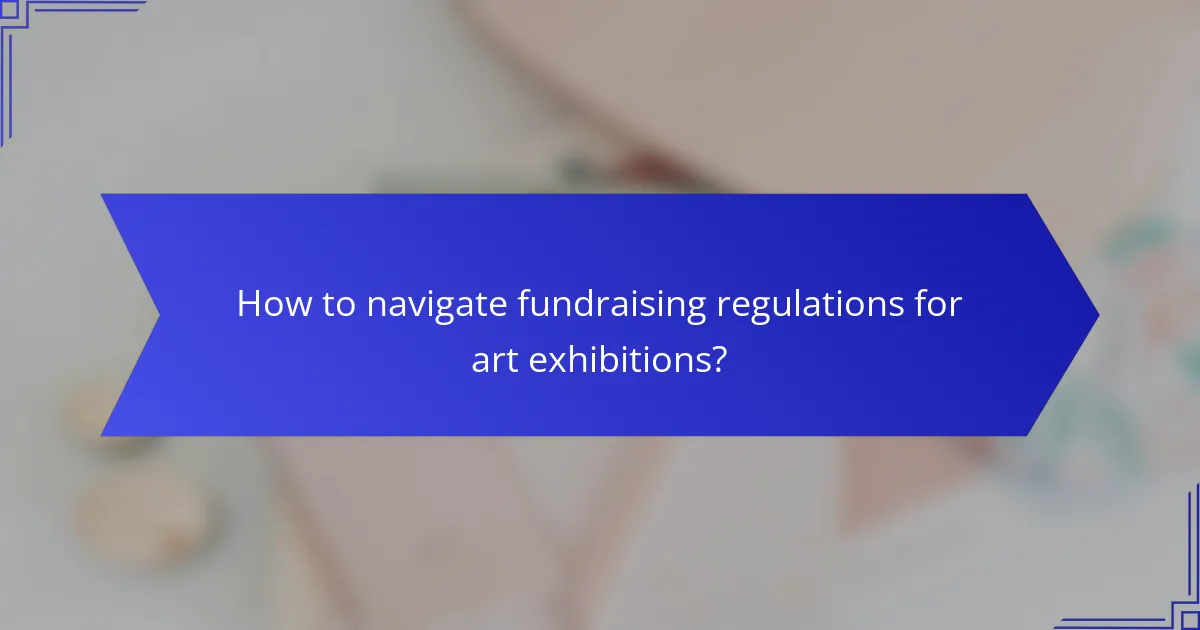
How to navigate fundraising regulations for art exhibitions?
Navigating fundraising regulations for art exhibitions involves understanding local laws and compliance requirements. Nonprofits must ensure they adhere to guidelines that govern fundraising activities, including grant applications and event compliance.
Grant applications
When applying for grants, nonprofits should focus on aligning their projects with the funder’s priorities. Many grantmakers require detailed budgets, project descriptions, and evidence of community impact, so it’s crucial to prepare comprehensive documentation.
Be aware of deadlines and specific eligibility criteria for each grant. Some grants may limit funding to certain types of organizations or require matching funds. Always read the fine print to avoid common pitfalls that could jeopardize your application.
Fundraising event compliance
Fundraising events must comply with local regulations, which can vary significantly by region. This includes obtaining necessary permits, ensuring proper financial reporting, and adhering to any restrictions on fundraising activities.
Consider the venue’s capacity and safety regulations, as well as any requirements for food and beverage service. Additionally, be transparent about how funds will be used, as this builds trust with donors and helps meet compliance standards.
